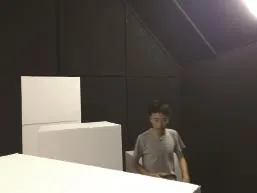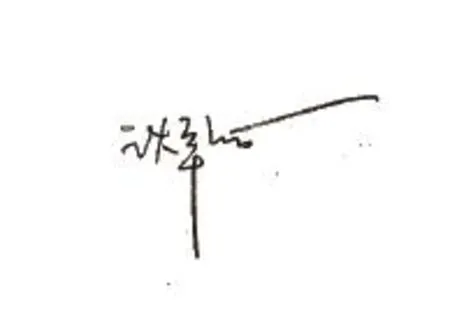有人有风景
2016-03-17学术主持沈乾石ACADEMICHOSTSHENQIANSHI
学术主持:沈乾石 ACADEMIC HOST: SHEN QIANSHI
有人有风景
WITH PEOPLE AND SCENERy
学术主持:沈乾石 ACADEMIC HOST: SHEN QIANSHI

沈乾石近照
我们使用肉眼取景的结果,偶尔会被称为“风景”。艺术家借助其训练有素的双手,在有限尺寸的绘画作品中将之重现。留存下来的绘画储存了彼时的信息、艺术家鲜活的风格志趣,这些也影响到后世人的观看。
习惯轻轻松松就被打破了。跟随摄影出现的新取景模式,也逐渐改变了“风景”的表征:此时的“风景”是可以放大缩小、随意查看细节的;是可以通过软件调整色调,甚至添加、虚构内容的;更是那些远超视界的画幅、照片中悬浮在水洼上的绅士,等等。这些新表征同样也影响到了绘画:艺术家对于形变的猎奇心;新的、更混乱的画幅比例的产生;因焦点的变化,产生的各种边缘线处理方式(没人在乎“果子的亮面”能否“转到背后”一样),等等。通过以上这些潜移默化的改变,与之形成的既定事实,很容易得到结论:我们很难认为“风景”是源自于“自然界给予人的提示”,它更像是经人为筛选与重组而后剩下的素材的集合。圣维托克山以及周边的树林,主动地暗示塞尚这是一处值得关注的景致,此后他的欲求与舍弃最终决定了这张“风景”,以及它的价值。
人类也喜欢塑造更为真实立体的地景。《东夷列传》中有这样一则记录:“贞观二年,破突厥颉利可汗,建武遣使奉贺,并上封域图。五年,帝诏广州司马长孙师临瘗隋士战胔,毁高丽所立京观。”这种炫耀战功用尸骸堆砌形成的土丘,不知道能不能够算作“建筑”,似乎更应该归纳为“风景”。这个血淋淋的土丘并非对自然的模拟,也没有祭祀和实用上的价值。它越过了文人的山石草木,简单粗暴地牵涉了历史线索中错综复杂的地缘政治,也暗示人类尚未褪去的动物本能,以及诸多无法简略在文内讨论的宏大命题。与“美好”“自然”相对,“颤栗”与“人为”也同样在文明的发展中,不断通过各种方式昭示“风景”一词在不同语境下的强烈差异。“风景”一词仍旧由诸多碎片化的现实构成,这些由表及里的差异,也导致词语本身的解读困难,引发讨论的必要。
艺术家对于“风景”一词的探讨更加直接。外部既已存在的地景、内部心源共通,揭示自然景观以及人文风貌的传移,诚如古人借助“风景”物我两忘的同时,也试图使用绘画超越语言,更准确地描述世界。东西方文化差异也不断地在这些尝试中留下蛛丝马迹。
绘画与摄影,作为我们最便于考察这些蛛丝马迹的物证,也逐渐变得“不可考”。点、线、面元素构成的发展,也将“风景”逐渐引导至趋近于抽象。这种并未带有直白信息的抽象作品,也早已成为不算新鲜的“新趋向”,在当下与网络带来的美学倾向交缠,形成新的审美观。而人工图像越来越难传达它使我们领悟到的意义,哪怕仅仅是一小部分。艺术家们需要通过自身与作为艺术品的“风景”发生关联,虚构出一处更具血肉的饱满风景。正圆形的湖面、半圆形的山峦,这些毫无想象力的归纳,粗暴地驱赶普通人离艺术越来越远。但这种粗暴我们是否需要,还是这种行为才是真正“风景”存在的证据?
必然是我们引发了关于“风景”的一切。

The results of our eye-view are occasionally referred to as “scenery”. Artists use their trained hands to reproduce them in limited-size paintings. The information of that time and the artist’s fresh style and aspiration stored in retained paintings also affect later generation’s view.
Habits are broken easily. The new view-finding mode following photography also has gradually changed the characterization of “scenery”: now, the size of “scenery” is variable, and we can see the details at will; the color tone can be adjusted with software, and even the content can be added or fictional; the“scenery” are pictures far beyond the horizon, gentleman suspended over puddle in the photos, etc. These new characterizations also affect painting: the artist’s curiosity for deformation; the emergence of new and more chaotic frame ratio; a variety of edge line treatment methods (just as no one cares about whether the “shiny side of the fruit” can be “turned back”) resulted from changing focuses, etc. It is easy to draw conclusions from these above subtle changes and the established fact of them: it is difficult to think that the “scenery”is “nature’s hints to people”; it is more like an assembly of remaining materials after human screening and reorganization. San Vitoque Hill and its surrounding woods actively suggested Cézanne that this was scenery worth attention, and since then, his desire and abandon finally decided this piece of“scenery” and its value.
Humans also prefer to create a more realistic three-dimensional landscape. There is a record in “Collected Biographies of Barbaroi”: “in Zhenguan second year, beat the Jieli Emperor of Tujue; Jianwu send an ambassador to congratulate Tang Dynasty and deliver the territory map. In Zhenguan fifth year, the emperor instructed the manager of Guangzhou to bury the decomposed bodies of warriors of Sui Dynasty, and damaged the architecture built by Gaoli.” I don’t know whether we can call such hill formed by piles of skeleton to show off battle achievement as “architecture”, it seems more like “scenery”. This bloody mound is not a simulation of nature, and there is no practical value for sacrifice. It goes beyond the literati’s hill, stone, grass and woods, and involves the complex geopolitics in the historical clues in a simple and crude way, and also implies human’s yet-to-fade animal instinct, as well as many grand propositions that cannot be simply discussed in the text. In contrast to “beauty” and “nature”, “shudder” and “man-made”also exist in the development of civilization, constantly declaring the strong differences of the word of “scenery” in different contexts in various means. The word of “scenery” is still formed by many fragmented reality. And these differences from the outside to the inside also lead to the difficulty to interpret the word and trigger the need for discussion.
The artist’s discussion of the word “scenery” is more direct. The outer existing landscape is connected with inner world, revealing the transmission of natural landscape and style of humanities. Just as the ancients forget the things and their selves with “scenery”, in the meanwhile, they also tried to go beyond language with painting and to describe the world more accurately. The cultural differences between the East and the West also keep leaving clues in these attempts.
Painting and photography, as physical evidences most convinent for us to investigate these clues, also gradually become “not investigable”. The development composed of point, line and plane also gradually guide the “scenery” to almost abstract. Such abstract without straightforward information has long been a common “new trend”, which form new aesthetics in the intertwing with aesthetics brought by network. It is more and more difficult for artificial images to convey the meanings we realized, not even a small part. Artists need to create a more fleshful landscape by associating themselves with the “scenery” as artwork. These none-imaginative inductions such as round lake and semi-circular mountains brutally drive ordinary people farther and farther away from art. But do we need this brutality, or is this action the evidence of the existence of real “scenery”?
It must be us triggering everything about “scenery”.
Shen Qianshi
